Cannabis stretching: What it is and how to deal with it
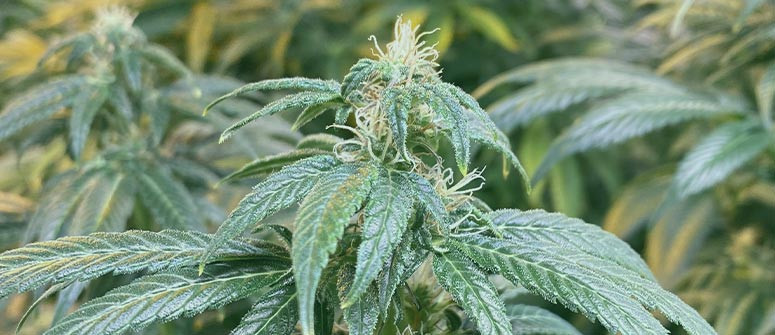
In most cases, abnormal stretching in cannabis plants indicates some kind of environmental issue. Here, we go through the possibilities, both normal and abnormal, behind stretching, and then look at how to prevent and fix rapid stem growth in cannabis.
Contents:
- What is cannabis stretching?
- Why do cannabis plants stretch?
- Does cannabis stretch during the day or night?
- When do weed plants stop naturally stretching?
- Why should you combat stretching in cannabis plants?
- How to prevent stretching cannabis plants
- How to fix cannabis plant stretching
- Cannabis plant stretch is no match for you
Cannabis plants love to grow—sometimes a little too much. Though some substantial vertical growth, aka stretching, is somewhat unavoidable, and even beneficial, weed plants can also stretch for the wrong reasons. This can then lead to a string of different problems. Whether it’s weak stems and poor bud production or plants that are simply too tall for your space, we have the tips to ensure your plants don’t shoot for the sky. This article looks at why cannabis plants stretch—for both natural and abnormal reasons—and how to manage it when it occurs.
What is cannabis stretching?
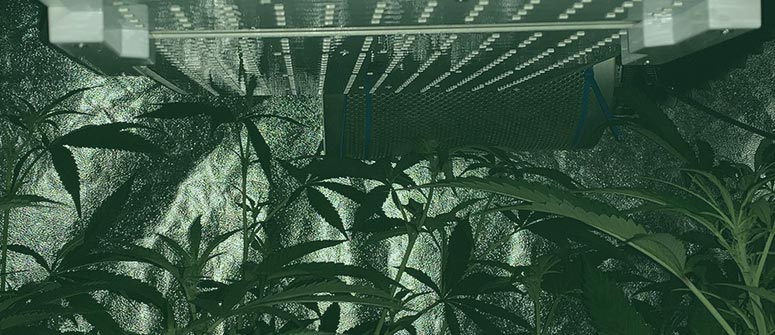
Cannabis stretching is a phenomenon in which cannabis plants put effort into increased stem growth, causing them to rocket in height. This can be both a natural process and a stress response to unsatisfactory conditions. If unmanaged, stretching can result in tall, thin plants that struggle to support themselves.
Stretching is a natural, even advantageous process that occurs with cannabis plants during the late vegetative and pre-flowering phases. This “flowering stretch” is generally unavoidable, though several factors, such as genetics, can influence how dramatic the stretch is.
Avoidable or abnormal stretching, however, is called etiolation. This happens when a cannabis plant is stressed, most often due to a lack of light.
One thing to note is that taller plants with greater internodal spacing are less susceptible to bud rot and issues related to stagnant air and humidity—so there is a balance to be struck. Stretching isn’t all bad, as long as it doesn't get out of hand.
Why do cannabis plants stretch?
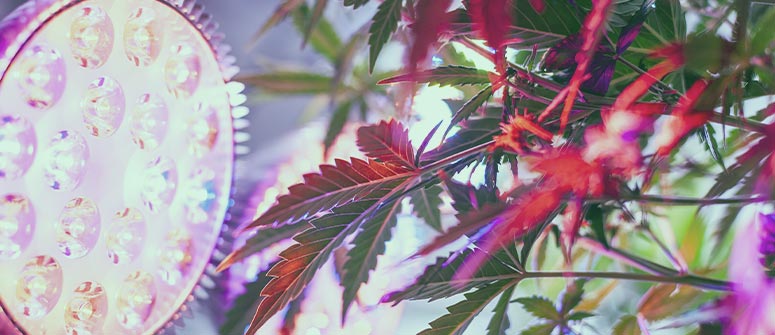
As mentioned, there are several reasons cannabis plants might stretch. Understanding how to identify the different causes will help you to rein in stretching in your own grow-op, maximising the efficiency of your grow space and helping you to achieve the biggest harvest possible!
Cannabis strain
First, genetics.
On the whole, indicas tend to grow low, bushy, and dense, exhibiting tight internodal spacing and producing dense colas. This is why indica cultivars are popular among indoor growers in particular; you can fit a lot of plants, and achieve a hefty harvest, in a small space.
Sativas, on the other hand, grow tall and spindly, with greater internodal spacing. Outdoors, some sativas can reach or even exceed 3 metres tall! While this is impressive, it can be problematic in terms of space and discretion.
This difference between indica and sativa plant growth is one of the reasons that there are so many cannabis hybrids on the market. You can capture the strength and energy of a sativa strain and marry it with the shorter growth of an indica, resulting in plants that can be grown in a wider range of environments.
Indicas, sativas, and hybrids all have the ability to stretch, and all will—to some degree. However, unhelpful stretching is more likely with sativa and sativa-dominant strains, whereas those with a large share of indica genes tend to be easier to control.
Lighting: lack of it or the wrong type
One of the main environmental factors that can cause stretching (etiolation) in cannabis plants is poor lighting. In a grow room, this is an avoidable issue, and generally the result of one of three causes: the distance from your grow light to the canopy is too far, the light is too weak, or you’re using the improper type of light.
The phenomenon of etiolation makes sense in nature; cannabis plants that don't have access to adequate light will grow upward toward the sun in the hope that they'll break through the canopy that's blocking it off. Indoors, the “sun” becomes a grow light.
In the case that your lights are too far away, plants will stretch further and further until they deem the distance sufficient. The recommended distance between your plant canopy and your lights varies depending on the light source, genetics, stage of growth, and other factors. For example, recommendations for LEDs state an acceptable range of 30–60cm. Do your due diligence and research recommendations relevant to your specific grow light.
Second, the light may be too weak. You could be using the right type of light, but perhaps it's not emitting enough to adequately fuel photosynthesis and other plant processes. In this case, plants will continue to stretch in hopes of achieving greater exposure.
Finally, choosing the right type of light for each stage of growth is important for stopping unwanted stretching. When we say “the right type of light”, we mean light that gives off an appropriate spectrum. For instance, seedlings and vegging plants perform best when exposed to blue light, whereas flowering plants like the red end of the spectrum.
High temperatures
If it's too hot—generally over 29°C—your plants will stretch, becoming thin, spindly, and weak. Keeping your plants in the right temperature range will not only help to prevent stretching, but will encourage overall healthy growth.
Large fluctuations in temperature can also cause stretching. If it gets very cold at night and then hot in the day, plants may react accordingly. Outdoors, there's little you can do about this, except bring plants indoors at night. Indoors, you should be able to prevent this issue by keeping day and night temperatures within a range of 20–28°C and 17–20°C, respectively.
Other causes
The above causes are the most likely suspects behind tall and spindly plants, but there are other possibilities.
If you decide to transplant, the shock of this process may cause some specimens to exhibit dramatic stem growth. To combat this, do your best to maintain a consistent environment for your plants before and after the transplant. This includes making sure the soil temperature, moisture, and nutrient content are consistent.
Another potential cause behind stretching is overcrowding. Too many plants crammed into a small space will inevitably block some plants, or some parts of plants, from being bathed in adequate light. Unless you’re opting for a specific plant training method, a spaced-out grow will yield healthier and more productive plants.
Linked to that, plants on the outside of a grow may stretch more than those in the middle. Lights radiate most of their power directly downward, and it diminishes in a cone shape. Therefore, even if your lights are the right type and distance, plants on the edge of the light cone may not be getting enough.
Does cannabis stretch during the day or night?
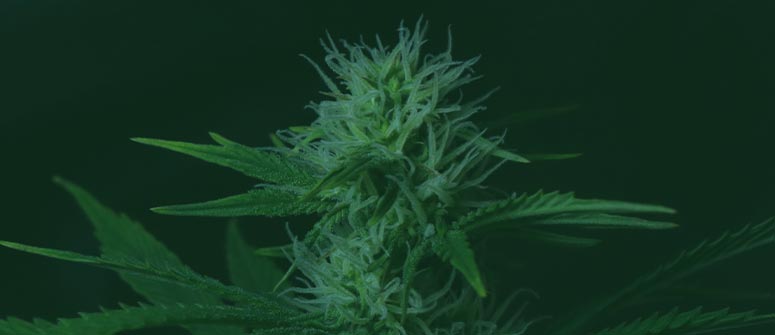
On the whole, it seems that plants do most of their stretching at night, or during the dark phase indoors. It is at this point that they use the energy they've built up in the day to build new cells. As an example, autoflowering cannabis plants that are grown under 24 hours of light a day (constant light) tend to grow squat and more compact compared to those exposed to a period of darkness.
When do weed plants stop naturally stretching?
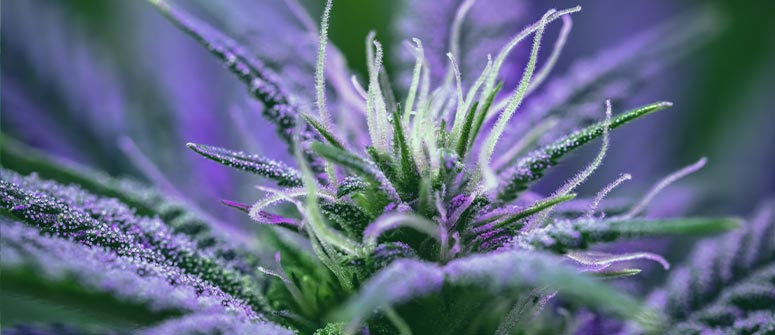
Though cannabis plants can stretch at many points during their life cycle, they tend to experience a profound period of stem growth in the first 2–3 weeks of flowering. During this flowering stretch, depending on genetics, plants can double in height.
Once this time has elapsed, however, they should stop stretching. In fact, not only should plants stop stretching, but all upward growth should now cease, with energy being directed entirely to flower production.
It’s important to accept the inevitability of the flowering stretch; it's just a natural part of cannabis plant growth. What's important is to make sure that matters don’t get out of hand.
Why should you combat stretching in cannabis plants?
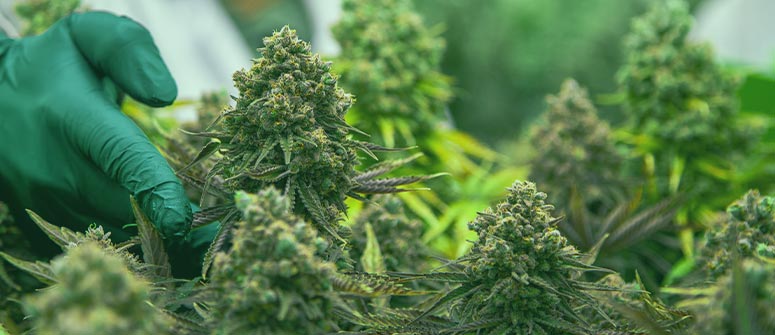
There are two main reasons to try to stop your cannabis plants from stretching.
The first is to ensure a strong plant structure. Marijuana plants that stretch a lot, especially during the seedling or early vegetative stages, can end up very tall but quite weak. Branches can snap and the whole plant might topple over once it starts producing buds. Indeed, very stretchy plants can fall over before they've even begun producing flowers. There's little sadder than having to pick up a collapsed seedling!
Second—space. Tall plants might look magnificent, but they also take up more vertical space than some can afford to provide. Outdoors, stretching is less of an issue, but indoors, a grow tent is only so tall, so you don't want plants surging out of control.
How to prevent stretching cannabis plants
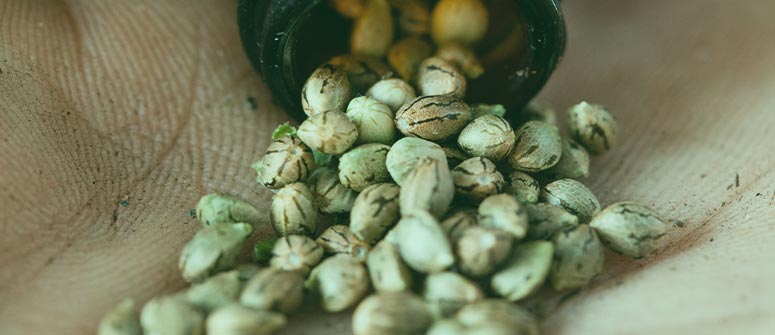
Given the above, it's important to know how to prevent cannabis plants from abnormally stretching so you can grow strong plants that can support their final, monster yields—and that won’t take over your grow space.
Of course, depending on the cause of stretching, the solution will differ. However, many of the following solutions can be used preemptively to avoid dealing with excessive stretching in the first place.
Choose the right strain
Picking a suitable strain is a very good place to start. If you only have a small grow tent, you're probably best off not picking a sativa landrace that can reach a couple of metres in height. Rather, stick to an indica-dominant cultivar that's specifically bred for indoor growing. These tend to hit about a metre in height but feature bushy, productive growth. If you really need to stay small, consider growing autoflowering strains.
Promote air circulation
Like humans, cannabis plants love fresh air. A packed grow full of stagnant, hot, and humid air will trigger plants to stretch in the hunt for a fresher climate. Good air circulation, keeping the lower parts of the plants fresh, will help to prevent or stop stretching.
Depending on your setup, you could instal an exhaust fan system, which should maintain a constant cycle of air exchange. If your grow is smaller and a little more DIY, a simple desk fan will also do the trick. Basically, so long as air is moving throughout the plants’ leaves, and humidity doesn't build up, they should be happy!
Tip: blowing an oscillating fan can help to strengthen the stems of cannabis plants indoors, much like wind outdoors, resulting in plants that are more structurally sound and capable of carrying large yields.
Shorten the vegetative stage
Bearing in mind that plants can double in size during the first 3 weeks of the flowering stage, you can combat this by shortening the vegetative stage. If you see that your plants are growing a lot, and that by the time they hit flowering they'll be over half the height that your space can afford, you can cut this process short. Switch to a 12/12 light cycle to trigger flowering; if you time it right, your plants should max out at around the right height.
Provide enough space
Stretching can’t always be blamed on your plants. You, as a grower, also have some responsibilities. Your plants need adequate space. Spaciousness ensures good air circulation, keeps temperatures cool, and allows for equal light distribution across the canopy. Stuffing a load of plants into a small space won't get you a greater yield if all of those plants suffer as a consequence.
Only grow the healthiest plants
If you see that a few of your plants are struggling from the beginning, it may be a sign that they'll be trouble later on. Weak and unhealthy cannabis plants are more susceptible to shock and stress, and as a result are more likely to stretch compared to robust, healthy plants. Though it can be a difficult decision, it might be a good idea to cull any particularly weak plants early on in your grow.
Provide enough of the right type of light
As mentioned, getting the lighting right is really important to preventing abnormal stretching.
Seedlings like blue light, often best provided by cool CFL lights, as it helps them to develop strong root systems. This mimics the natural light spectrum outdoors during the spring. Vegging plants also like blue light, but can take stronger HID or LED fixtures. Flowering plants, on the other hand, like light with a red colour temperature that mimics that of late summer and autumn.
Providing light that is strong enough, within the correct colour spectrum, and at an appropriate distance from the canopy is probably the easiest way to avoid abnormal stretching.
Keep temperature in check
As already discussed, too much heat or large fluctuations between day and night temperatures can cause your plants to stretch, as can too much humidity.
During the vegetative stage, a daytime temperature of between 20–28°C is optimal, with a nighttime range of 17–20°C. In the flowering stage, 20–26°C during the day and 17–20°C at night should yield the best results.
Provide less CO₂ and nutrients
If your plants appear to be stretching no matter what, then you may need to step in and limit the energy levels. Food and CO₂ are necessary for plants to produce energy and grow, so limiting their access to these resources can help to slow them down.
In most cases, limiting CO₂ just means not adding any extra CO₂. Artificially removing CO₂ from a growing environment is far beyond the remit of most grow spaces, especially if it's only to stop plants from stretching.
Reducing food is much easier. Simply cut your feeding schedule for a while. If your plants are exhibiting rapid growth, either skip a few feeds entirely, or only give them a fraction of what you usually would. Once they seem to be under control, you can start slowly increasing again.
Train your plants
Training plants is also a very good way to control their overall size. There are many different forms of training. For those who wish to do no harm, or those growing autoflowers, techniques such as sea of green (SOG), screen of green (ScrOG), and low-stress training (LST) can be used. These help to determine the final height of the canopy and facilitate even access to light for all parts of each plant.
Conversely, high-stress training (HST) methods, such as topping, super cropping, and main-lining, involve damaging plants to control their height and shape. These should only be performed on photoperiod plants, and only by growers who know what they are doing.
However, growers should consider defoliating or even pruning their plants, especially if they become particularly bushy. Pruning helps them to direct more energy toward bud growth, and stops heat and humidity building up among the lower branches, which should also help to prevent stretching.
How to fix cannabis plant stretching
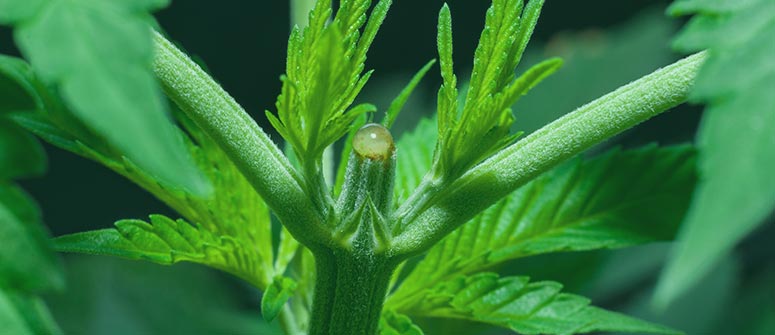
Sometimes, prevention isn't enough. All growers will experience inconvenient plant stretching from time to time. If it happens to you, here's what to do.
Topping
Topping is one HST method that can help growers shorten their plants and increase yield! Basically, it involves chopping off the top of the plant. When it heals, there will be two, instead of one, bud site. Furthermore, the overall height will be decreased.
Before topping any plant, read up on it to make sure you know what you are doing. You don't want to needlessly mutilate them for no gain.
Note: topping can only be performed during the vegetative stage, and should be avoided with autoflowering plants.
Bury the stem
You can also bury the stem. There are two ways to do this, depending on whether the plant needs more support or you actually need to reduce its height.
In the first case, you can just pile up more soil around the base of the stem until it seems adequately supported. It will quickly adapt to this circumstance. This is most commonly used for stretching seedlings or young plants in the early veg phase.
For those that need to be shortened, you’ll need to bury them again—just deeper. A plant with a highly developed root system may be difficult to dig up and transplant, so be very careful if you decide on this route.
Note: a plant that's in the flowering phase probably shouldn't be repotted, as it won't have time to repair its roots, and the final yield will probably be diminished.
Use string or plant wire
A classic low-stress training technique involves tying plants down with string or wire. Simply bend them so their stem is horizontal, and bind them to their pot in this position. Now they'll grow laterally, resulting in more even light exposure across their leaves and bud sites. Obviously, they will be squatter as well.
While this is a viable solution during the veg phase, what if your plants are past the point of training and simply need structural support? Here too you can use string or wire to keep the branches supported and the plant upright.
Use trellises or tomato cages
Finally, you could bind your plants to trellises or tomato cages to offer physical support and more even exposure to the light source. Whether looking to support your plants vertically or horizontally, these apparatus can keep weed plants strong and healthy.
Cannabis plant stretch is no match for you
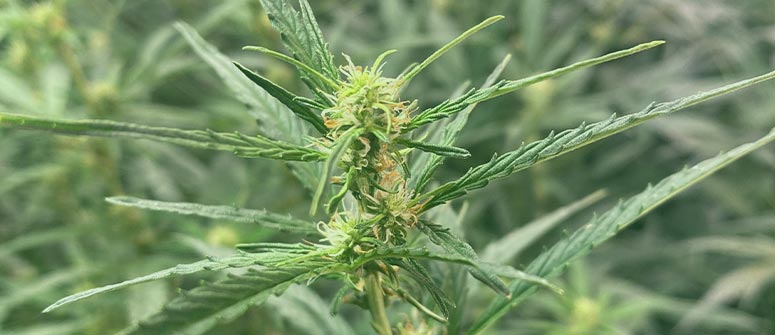
Despite being an unavoidable occurrence, you don’t need to let stretching marijuana plants determine the success of your grow. Consider our tips, and you’ll be well on your way to handling such growing issues with ease.




